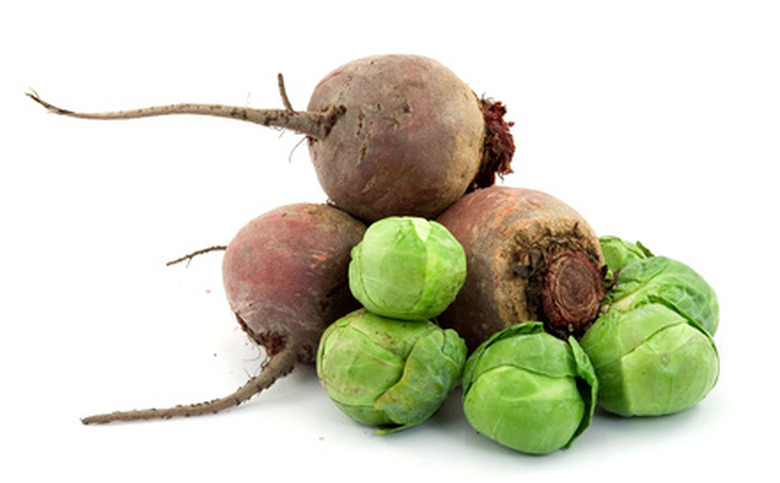How To Grow Vegetables In Winter In Zone 6
Things Needed
- Seeds for cold-hardy vegetables: brussels sprouts, spinach, cabbage, beets, broccoli, cauliflower, mache, arugula, kale, rutabagas
- Seeds for half-hardy vegetables: lettuce, carrots, kohlrabi, radishes, turnips, green onions
- Cold frame or plastic hoop house
- Organic mulch (straw, shredded leaves,or pine needles)
- Compost
- Shovel
- Liquid fish emulsion fertilizer
- Hose-end chemical sprayer
- Seed-starting trays
- Potting soil
- Shelves with artificial lights
- Shade cloth
- Stakes
- Hose and water source
- Calendar
USDA hardiness zone 6 traverses the United States from coastal Massachusetts and New Jersey inland through Pennsylvania and West Virginia, across the central states through the Four Corners and up to cover most of eastern Oregon and Washington. Hardy vegetables can grow throughout the winter in these regions with little to no protection, and slightly less hardy varieties can thrive with simple cold frame or hoop house cover, producing garden vegetables fresh for the picking year-round.
Step 1
Mark your average first frost date on your calendar; check with your local cooperative extension service office to determine the average first frost date for your location, as this date varies even within a single hardiness zone. Ten weeks before your average first frost date, start seeds for half-hardy vegetables (other than radishes, which can be direct-seeded) in seed trays filled with potting soil. Eight weeks before your average first frost date, start seeds for cold-hardy vegetables (other than mache, which can be direct-seeded) in the same manner. Keep these trays on shelves under artificial grow lights until the plants are about 6 inches tall.
Step 2
Prepare planting locations in garden beds and cold frames or hoop houses by clearing all prior vegetation and turning in well-rotted compost with a shovel. Transplant 6-inch-tall vegetable seedlings to the garden, placing cold-hardy vegetables in open garden plots and half-hardy vegetables in cold frames or hoop houses. Water transplants thoroughly, then spray them with liquid fish emulsion fertilizer using the hose-end sprayer, mixing according to manufacturer's directions.
- USDA hardiness zone 6 traverses the United States from coastal Massachusetts and New Jersey inland through Pennsylvania and West Virginia, across the central states through the Four Corners and up to cover most of eastern Oregon and Washington.
- Ten weeks before your average first frost date, start seeds for half-hardy vegetables (other than radishes, which can be direct-seeded) in seed trays filled with potting soil.
Step 3
Direct seed radishes and mache, both in open garden beds and in cold frames or hoop houses, every 2 weeks until hard freeze.
Step 4
Stand stakes in the ground to the south and west of the planted vegetables. Drape shade cloth over the stakes on the hottest, sunniest days of autumn to provide shade to these cool-loving vegetables. Water the vegetables with the hose every few days unless rain makes this unnecessary; do not allow the soil to dry out. Spray with liquid fish emulsion fertilizer once every 10 days.
Step 5
Cease using shade cloth when daytime temperatures do not rise above 50. Mulch around the vegetables with a 6-inch-thick layer of organic mulch. Continue watering weekly until hard freeze.
- Direct seed radishes and mache, both in open garden beds and in cold frames or hoop houses, every 2 weeks until hard freeze.
- Water the vegetables with the hose every few days unless rain makes this unnecessary; do not allow the soil to dry out.
Step 6
When night temperatures drop below 50 degrees F, close the cold frames or hoop house nightly to retain heat. When daytime temperatures do not exceed 40 degrees F, leave the cold frames or hoop houses closed through the day, opening only to water or harvest vegetables.
Step 7
Harvest brussels sprouts, broccoli, cauliflower and cabbages before night temperatures reach 20 degrees F. Cover remaining vegetables in open garden beds with an additional 6 inches of mulch placed over the growing portion of the plant, and continue to harvest these as well as the vegetables in the cold frames or hoop houses all winter.
Tip
Plant parsnips, garlic and carrots in the fall. Dig fall-planted parsnips and carrots as soon as the ground can be worked in the spring; dig garlic as soon as the tops die back in early summer. Kale, beets and carrots are all sweeter once they've had a taste of frost.
